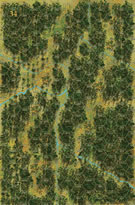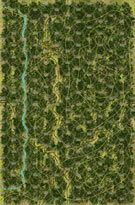|
Templeton's Crossing, The Last Day Kokoda Trail #23 |
||
|---|---|---|
| (Attacker) Australia | vs | Japan (Defender) |
| Formations Involved | ||
|---|---|---|
| Australia |  |
14th Infantry Brigade |
| Australia |  |
25th Infantry Brigade |
| Japan |  |
144th Infantry Regiment |

|
| Overall Rating, 2 votes |
|---|
|
3.5
|
| Scenario Rank: --- of 957 |
| Parent Game | Kokoda Trail |
|---|---|
| Historicity | Historical |
| Date | 1942-10-14 |
| Start Time | 08:00 |
| Turn Count | 24 |
| Visibility | Day |
| Counters | 69 |
| Net Morale | 1 |
| Net Initiative | 1 |
| Maps | 2: 34, 35 |
| Layout Dimensions | 56 x 43 cm 22 x 17 in |
| Play Bounty | 142 |
| AAR Bounty | 160 |
| Total Plays | 2 |
| Total AARs | 2 |
| Battle Types |
|---|
| Road Control |
| Urban Assault |
| Conditions |
|---|
| Terrain Mods |
| Scenario Requirements & Playability | |
|---|---|
| Afrika Korps | Counters |
| Guadalcanal | Counters |
| Kokoda Trail | Base Game |
| Introduction |
|---|
|
Superior numbers had allowed the Japanese to hold the line against three days of attacks by 25th Brigade. But attrition and short supplies were taking their toll, so when Australian reinforcements entered the battle on the fourth day, Maj. Gen. Horii sent orders to hold the line for one more day while a fallback position at Eora Creek was established. |
| Conclusion |
|---|
|
By the end of the fourth day, the outnumbered Japanese defenders were exhausted and barely holding on. Having succeeded in following their orders, they would pull out during the night and fall back to the position at Eora Creek. Before battle would be joined again, an entirely new Australian force would take over the pursuit. |
| Templeton's Crossing, the LONG Last Day | ||||||||||||
|---|---|---|---|---|---|---|---|---|---|---|---|---|
In Templeton's Crossing, the Last Day, the Japanese are trying to hold three villages and prevent the Australians from getting past them to the trails on the northern map. The Japanese are outnumbered, but have higher morale. The Japanese set up first, putting pairs of platoons in positions just in front of each of their villages. This allows them to cover the both the villages and the trails leading to the north. They plan to keep the Australians back as long as possible then fall back into the villages if necessary. The Australians plan to use their superior numbers to overwhelm the center of the Japanese position, while using a company on either flank to block the trails that would allow the Japanese to attack the Australian-held villages near the south edge. The Aussies approach to close range (the only range that works in this jungle), losing a few casualties, plus several platoons disrupted and a few demoralized. They set up several concentrated fire teams adjacent to the Japanese and begin an intense fire fight for the Japanese center. [Players note: Due to their superior numbers, the Australians were able to get two stacks of three against one Japanese stack of two counters in most of the center positions. This allowed the Australians to attack twice with a one or two column advantage, versus the Japanese attacking once on a lower column (the three-unit-target modifier was not enough to compensate for their low firepower)] At first, the Japanese hold their own. They manage to survive the storm of fire pretty well, inflicting enough disruptions to force the Aussies to slacken their fire while platoons regroup. Slowly though, the Japanese casualties mount up and they are forced to pull platoons from their flanks to shore up the center. Now the Australians on the flanks begin to attack the weakened Japanese positions, although they never really put a dent into the Japanese flanks. It takes a little over two hours to wear down the Japanese center enough for the Aussies to feel confident in assaulting it. Full-strength Australian platoons assault reduced-strength Japanese. Again, the Japanese hold their own at first. [The Australians had a lot of lousy assault rolls at first] After about 45 minutes of back-and-forth savagery the Japanese postion in the center falls apart. [On turn 15, The Aussies got 2x results in each of the two assault hexes, wiping out the Japanese in one hex and leaving only 1 reduced-strength, demoralized platoon in the other. Fog-of-War meant the one platoon did not not have to try to recover. On turn 16, the platoon failed recovery, fled, and was annihilated. The Aussies in the hex had not activated yet, so they immediately assaulted the adjacent hex and achieved a demoralization on the Japanese platoon there. That platoon promptly fled and was also wiped out.] Japan has nothing left to hold the center, and their units on the flanks are tied up defending villages against the Aussies there. Nothing prevents the main mass of Australian troops from advancing up the trails into the Japanese rear. By capturing one village, inflicting 23 step losses, and getting 17 steps onto the trails in the Japanese rear, the Aussies win a major victory. The Japanese did manage to hold two villages, but only inflicted 7 step losses. [This was a good, hard, infantry-only jungle scenario. It took a lot of patience to wear the Japanese down, but patience was rewarded when they swiftly and completely collapsed. I think next time I play this I'll try having the Japanese set up in stacks of 3 in the villages instead of stacks of 2 outside them. That will give them better firepower, and the dug-in status in the villages will compensate for the 'crowded hex' DF modifier. This strategy, however, may make it easier for the Australians to bypass the Japanese positions and get into their rear.] |
||||||||||||
| 0 Comments |
| Looked good for Australia on paper... | ||||||||||||||
|---|---|---|---|---|---|---|---|---|---|---|---|---|---|---|
On to the tenth battle of the Kokoda campaign. It’s actually the eleventh scenario, but we are currently skipping Scenario 19, the mother of all Kokoda scenarios. In this scenario the Japanese are defending along the stream from an Australian attack aimed at capturing villages and moving up the trail on the more northern map. The Australians have about a 25% advantage in units, about a 50% advantage in steps, and more than a 75% advantage in firepower. They gain one point per Japanese step lost, one for each step on the trail on the northern board, and three points for each village, and they start with three villages. The Japanese get two points per village, one per Australian step loss, and ten if fewer than ten Aussie steps are on the trail. About a third of the Japanese units start out with a step loss. On paper it looks good for the Aussies, but how does it play out? The Japanese form a line basically one hex north along the stream, every other hex. The machine gun units are in the central Japanese village ready to shift to a trail defense wherever needed. The Aussies build a large force at the southeast and southwest trail areas, keeping several units along the central portion to guard the villages and act as a reserve. The Aussies advance along the trail on both sides. Japanese opfire manages to disrupt key Australian units, which slows but does not stop the advance. In the southeast the Japanese assault in hexes 0613 and 0614, blocking the trail. Both sides tear into each other, and both keep rolling in reinforcements. Losses are about equal, but Australian morale suffers considerably and units keep rolling back to the village to recover. The advance slows to a standstill. The grinder keeps on, until finally the Australians crack the position in 0614 on the trail. Hex 0613 never falls, but a big hit by the Aussies on the trail knocks out a step and demoralizes the defenders. One unit recovers, the other fails and the unit and officer flee. The next assault demoralizes the defender, but also demoralizes all three attacking units. The defender flees, and the Australians own the trail. Reinforcements from the center try to follow up and move towards 0911. The Japanese defend the hex with the HMGs, and flank the village to block the advance towards the north board trail. The game ends with no villages captured or trail hexes occupied by the southeast force. In the southwest the Australians make a huge push, and clear the crossing very fast with some slowdown due to opfire. They make assaults on some Japanese in the jungle, which does not go particularly well, and the Japanese are happy to inflict an occasional loss on defense while tying down the Australians units. The Australians manage to reach the village at 1104, but the draw of reinforcements to the southeast frees a couple of stacks of Japanese to aid in the defense, to include the powerhouse stack of two Inf supported by a Lt with a combat modifier. This stack wreaks havoc on the Australians in assault hexes, shredding unit after unit and even killing the 10-1-2 Aussie Lt. They also kill the ranking Aussie leader, leaving the advance stunned in place, increasing the devastation from the Japanese forces. The southwest advance is pulverized, and the Japanese never lose the village or allow Australian units to move around them and get on the trail. The Aussies managed to inflict significant casualties on the Japanese, who felt each one given their starting condition. But the Japanese nearly doubled the step count on the Australians, especially in the combat against the southwest force. No villages changed hands, and no Australians reached the trail. Had the reinforcements gone to the southwest vs the southeast things may have looked very different. The Japanese would have had to choose between defending villages vs defending the trail, and the Aussies would probably have managed to rack up more points. But the southeast approach took too long and went through too many defensive locations. The defense was thin, but the Aussies couldn’t get around the defenders and get to the trail. A concerted effort in the southwest may have yielded fruit, but the initial push ran out of forces before hammering through. End score for the scenario, Japanese 37, Australians 20. Rated this scenario as a 3. I expected an Australian rout of the Japanese, and was surprised with the tenacity of the Japanese defense. Rolling was hot and cold for both players, and usually in unison (both roll 1s or 6s on an assault, trading many steps). In the end the Australian advance was just too slow. Assault hexes along the trail slowed down the advance on both ends of the map, and the reinforcements went to the slow but better manned side. A different approach could easily lead to different results. The Japanese cracked but did not break. At times the scenario dragged for the Japanese player as his small force had little to do while the Aussies kept moving and recovering. Campaign score: Japanese 331, Australians 72. |
||||||||||||||
| 0 Comments |

 KoTr022
KoTr022 
















